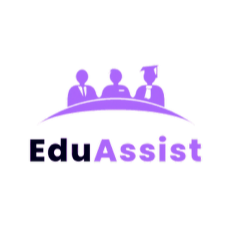Effective Teaching Strategies for Modern Classrooms
Effective Teaching Strategies for Modern Classrooms
In today's rapidly evolving educational landscape, traditional teaching methods are being supplemented and sometimes replaced by innovative approaches that better engage modern learners. This article explores effective teaching strategies that can transform your classroom experience.
Understanding Today's Learners
Modern students have different learning preferences and expectations compared to previous generations. They:
- Are digital natives comfortable with technology
- Prefer active learning over passive listening
- Expect personalized learning experiences
- Value relevance and real-world applications
- Have diverse learning styles and needs
Strategy 1: Active Learning
Active learning involves students in the learning process through activities, discussions, and problem-solving rather than passive listening.
Implementation Tips:
- Replace lectures with guided discussions
- Use think-pair-share activities
- Incorporate hands-on experiments and demonstrations
- Implement case studies and real-world problem-solving
Strategy 2: Technology Integration
Thoughtful technology integration can enhance learning experiences and prepare students for a digital future.
Implementation Tips:
- Use educational apps and platforms that support learning objectives
- Implement digital portfolios to track progress
- Create multimedia presentations and interactive content
- Utilize virtual field trips and simulations
Strategy 3: Differentiated Instruction
Differentiated instruction recognizes that students learn in different ways and at different paces.
Implementation Tips:
- Offer multiple ways to access content (visual, auditory, kinesthetic)
- Provide choice in assessment methods
- Adjust pacing for different learners
- Create tiered assignments with varying levels of complexity
Strategy 4: Project-Based Learning
Project-based learning engages students in complex, real-world projects that develop critical thinking and collaboration skills.
Implementation Tips:
- Design projects around authentic problems or questions
- Incorporate student choice and voice
- Build in regular feedback and revision opportunities
- Culminate with public presentations or products
Strategy 5: Formative Assessment
Ongoing formative assessment helps teachers adjust instruction and provides students with valuable feedback.
Implementation Tips:
- Use exit tickets to check understanding
- Implement digital polling and quizzes
- Provide specific, actionable feedback
- Use peer assessment and self-reflection
Conclusion
Effective teaching in modern classrooms requires a flexible, student-centered approach that engages learners and addresses diverse needs. By implementing these strategies, educators can create dynamic learning environments that prepare students for success in school and beyond.
Remember that the most effective teachers continuously reflect on their practice and adapt their approaches based on student needs and outcomes. Start by incorporating one or two new strategies, and gradually expand your teaching repertoire as you become more comfortable with innovative approaches.
Related Articles
Getting Started with EduAssist
Learn how to make the most of EduAssist tools and resources for your educational journey.
Read article →